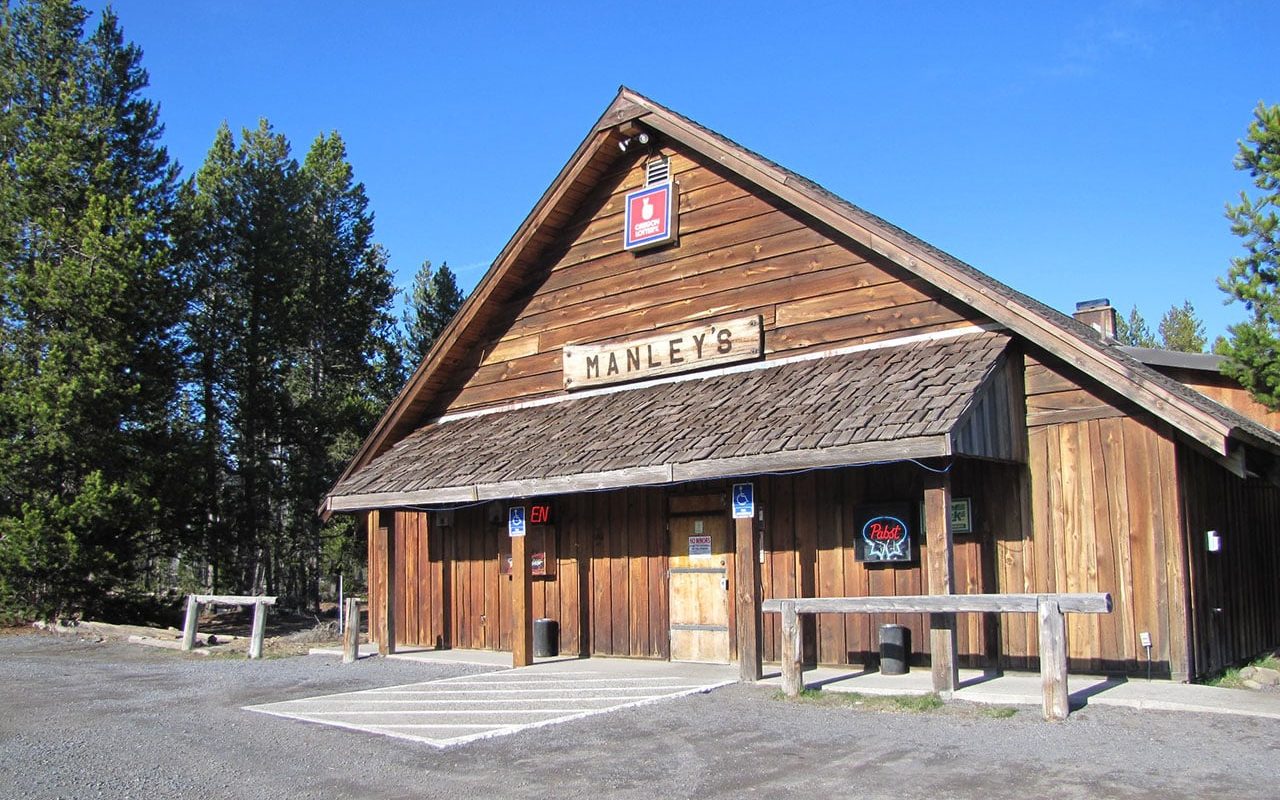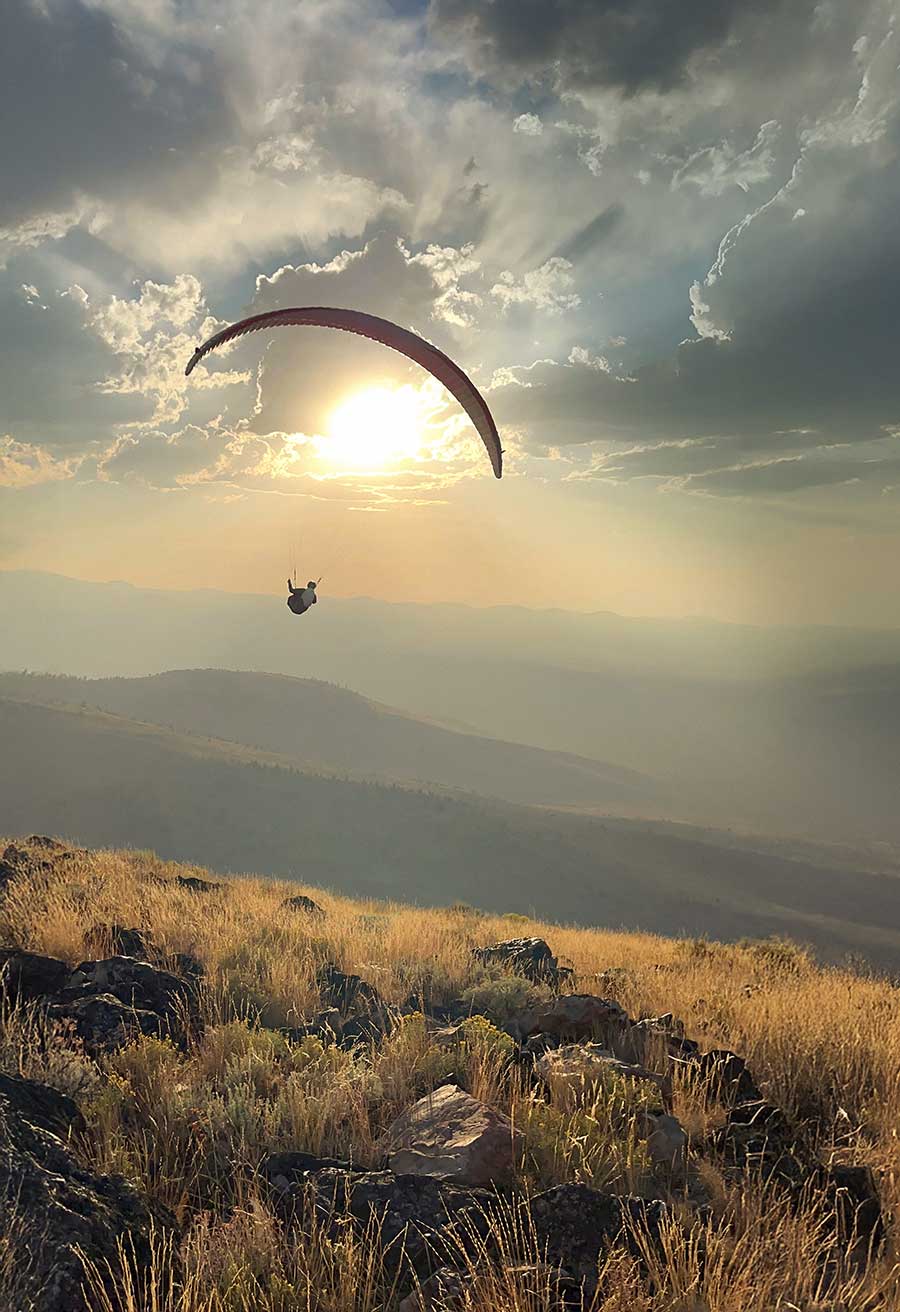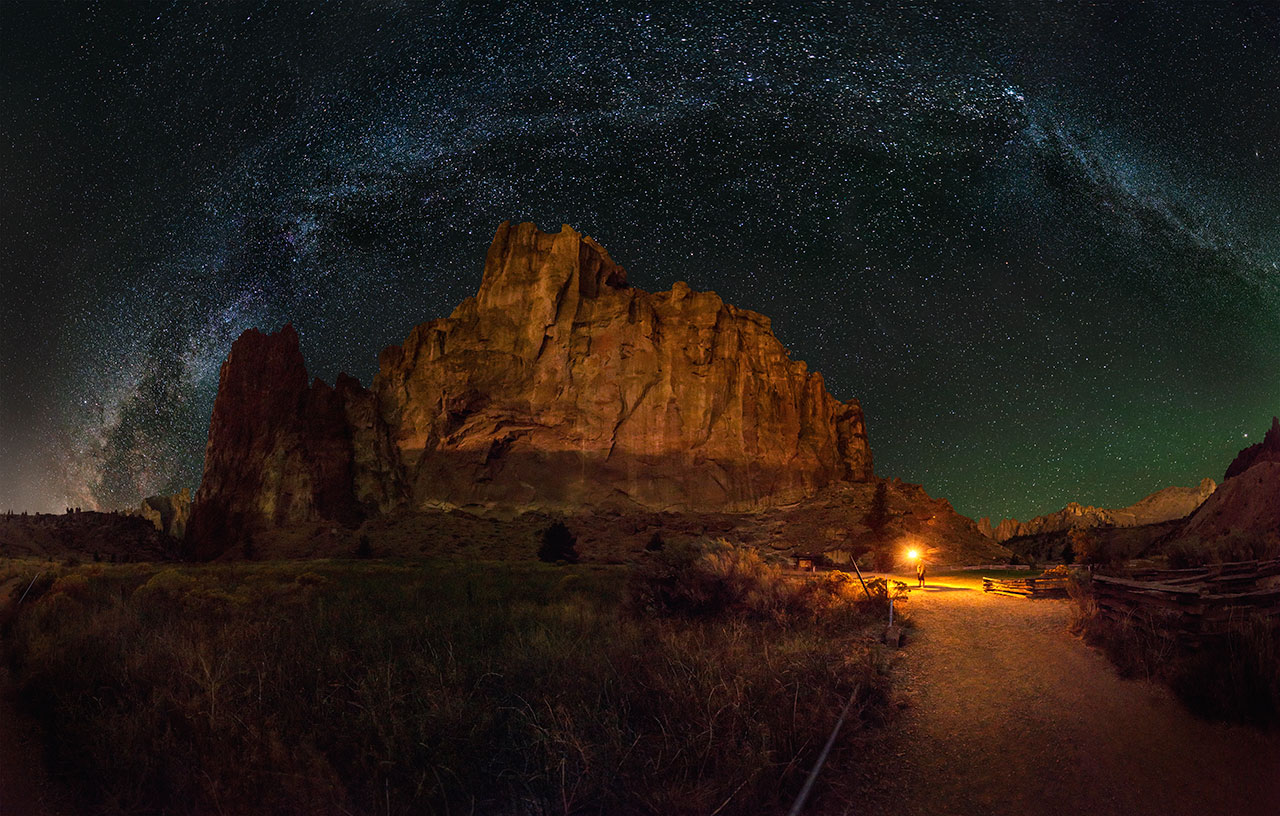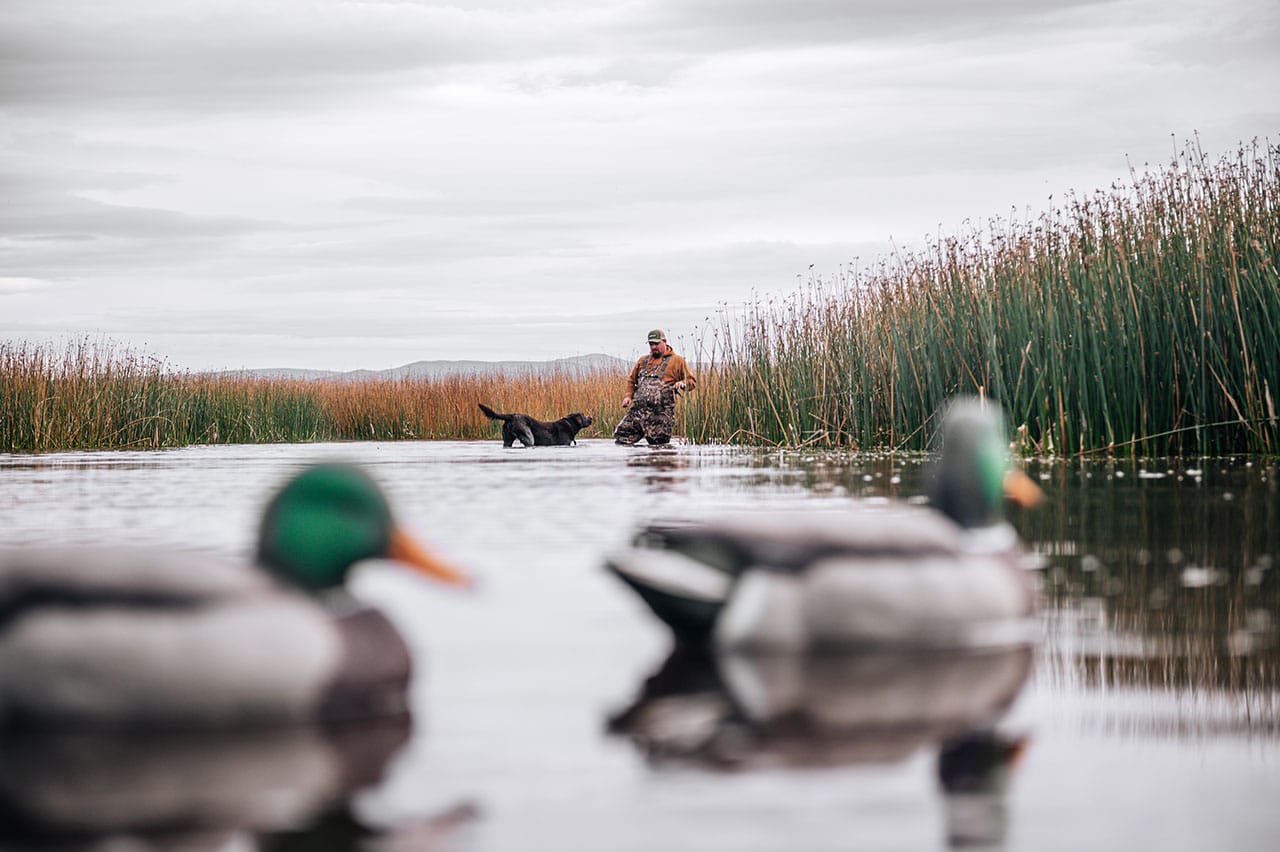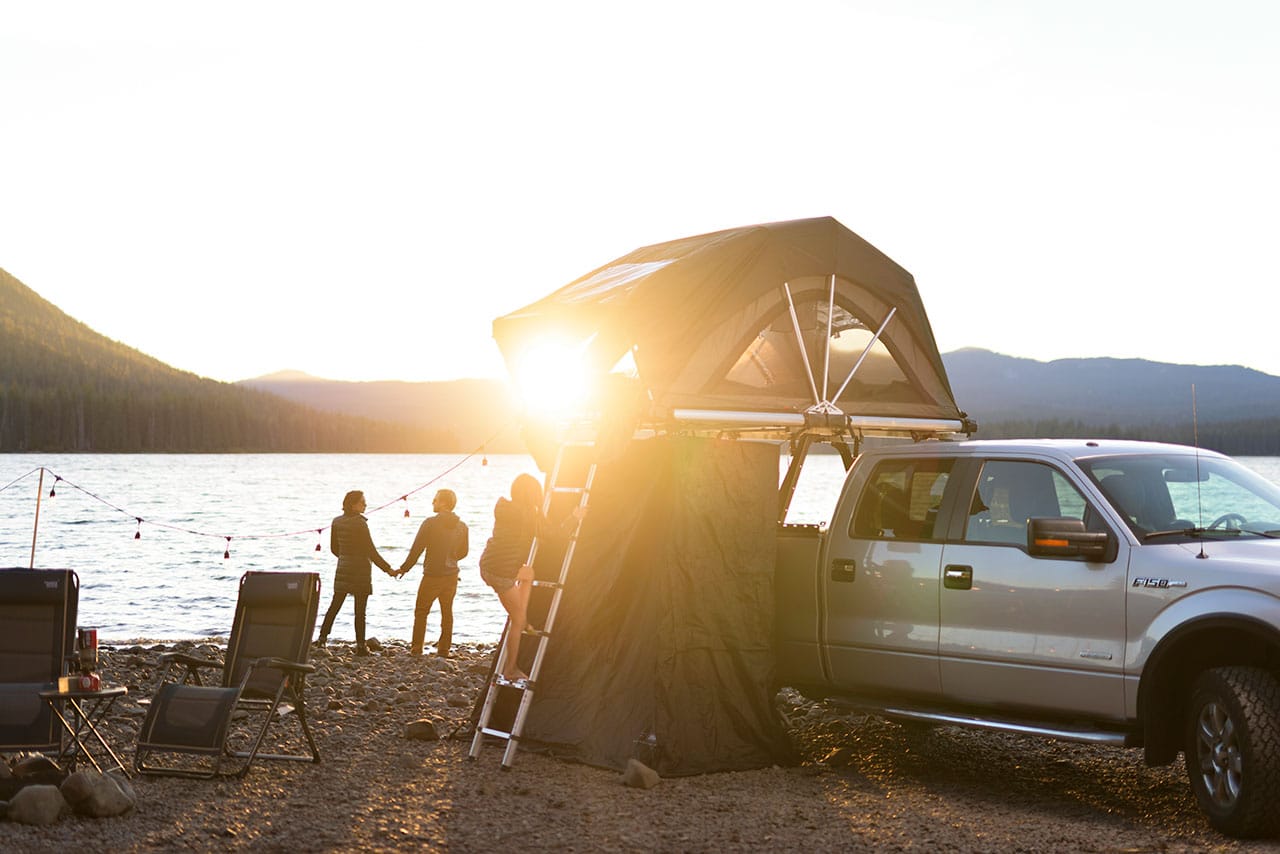You’ve driven past the iconic wooden Cascade Lakes Recreation Area sign on Century Drive dozens of times and might know the mileage posts by heart. But even if it’s a road well-traveled, how well do you really know the Cascade Lakes Scenic Byway? [Photo above by Cody Rheault]
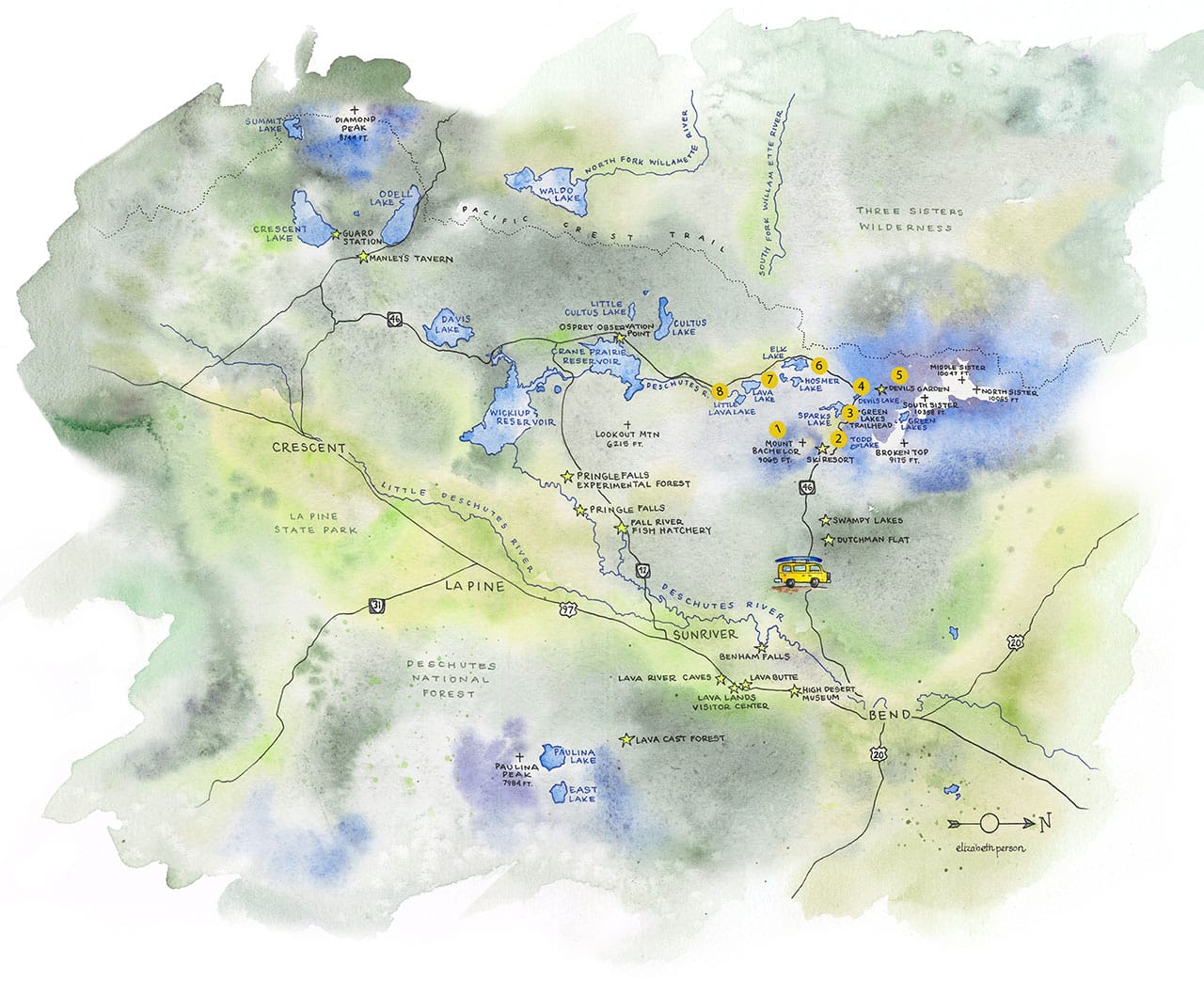
Map Illustration by Elizabeth Person
Beyond a Road Well Traveled
The 66-mile route from Bend to Crescent Lake accesses 14 sparkling lakes and dozens more if you’re willing to do some legwork from one of its many trailheads. Yet beyond the countless opportunities for fun along the way, there are scores of hidden gems, subtle secrets and tall tales that are waiting to be uncovered and explored. So grab a Northwest Forest Pass, fasten your seatbelt and come along for a drive that will shed new light on the byway in your backyard.
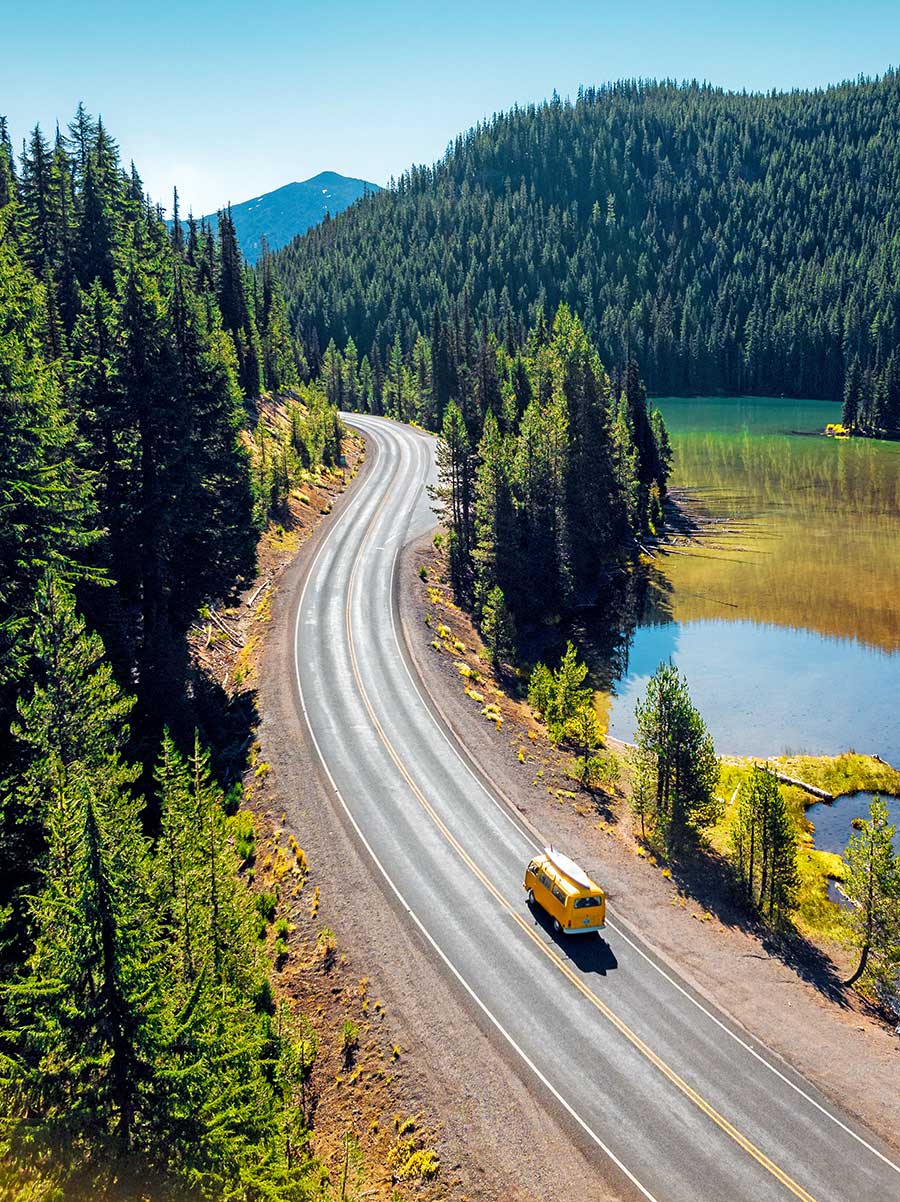
- Before the dormant volcano known as Bachelor Butte became the seventh largest ski area in North America, it was also known as Brother Jonathan and Mount Brother. The developers figured that skiing on a butte sounded small time, so they called their resort “Mt. Bachelor.” The name stuck but didn’t become official until the Oregon Geographic Names Board reluctantly voted to change it in 1983. By whatever name, the volcano last erupted between 8,000 and 10,000 years ago, which means its top layer of ash actually came from the more recent eruption of Mt. Mazama. No wonder its powder is so magical.

- If you visit Todd Lake or Sparks Meadow and feel a sense of déjà vu, you may have seen one of them before. These two sites are so quintessentially Western that they’ve set the stage for numerous Hollywood movies including “Rooster Cogburn,” starring John Wayne and Katherine Hepburn, “The Way West” with Kirk Douglas, and “Homeward Bound,” featuring two adorable dogs and a cat. Haven’t seen those classics? They may not be streaming, but you can rent them at the last Blockbuster after you drive back to Bend.
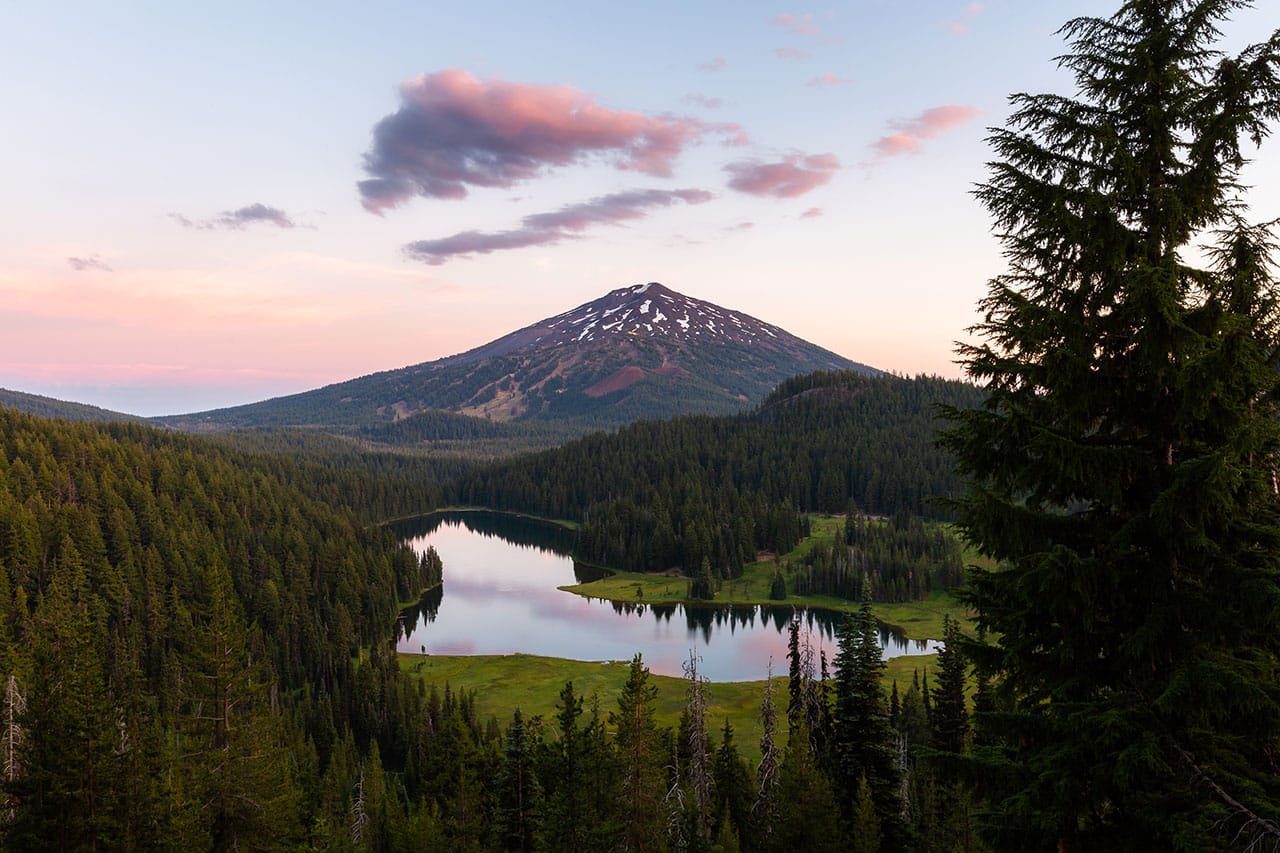
Photo of Todd Lake by Richard Bacon - On large, flat-sided boulders near Devil’s Lake, look for Native pictographs, evidence of the Indigenous people who once lived here. A few of the drawings are said to be thousands of years old.

- At Devil’s Lake, the glacial-fed water is both extra chilly and a clear aquamarine color. Paddling on the shallow, clear blue water gives the sensation of a magic carpet ride.
- In the late 1960s, astronauts in the Apollo space program came to places like the lava flow at Devil’s Garden to prepare themselves for walking on the moon. They climbed around similar lava rock at Lava Butte in their space suits. As it turned out, the surface of the moon was much less rugged than Devil’s Garden, but the astronauts added to its topography by taking one of our local rocks and placing it on the moon surface in exchange for a lunar rock now on display at the University of Arizona Alfie Norville Gem & Mineral Museum.
- In the 1950s, little-known Mud Lake was completely overshadowed by its resplendent neighbor Elk Lake. With a murky name and no fish, it had very few visitors. Then, someone had the audacity to stock it with Atlantic salmon for catch and release flytfishing. Paul Hosmer, The Sage of the Sagebrush Country, began singing its praises in the Brooks-Scanlon Pine Echoes newspaper, and they renamed it Hosmer Lake after him in 1962. These days, anglers, paddlers and campers can’t stay away. Now that’s a lake that cleaned up its act (and the fish evade catching like Nessie avoids being sighted at Loch Ness).
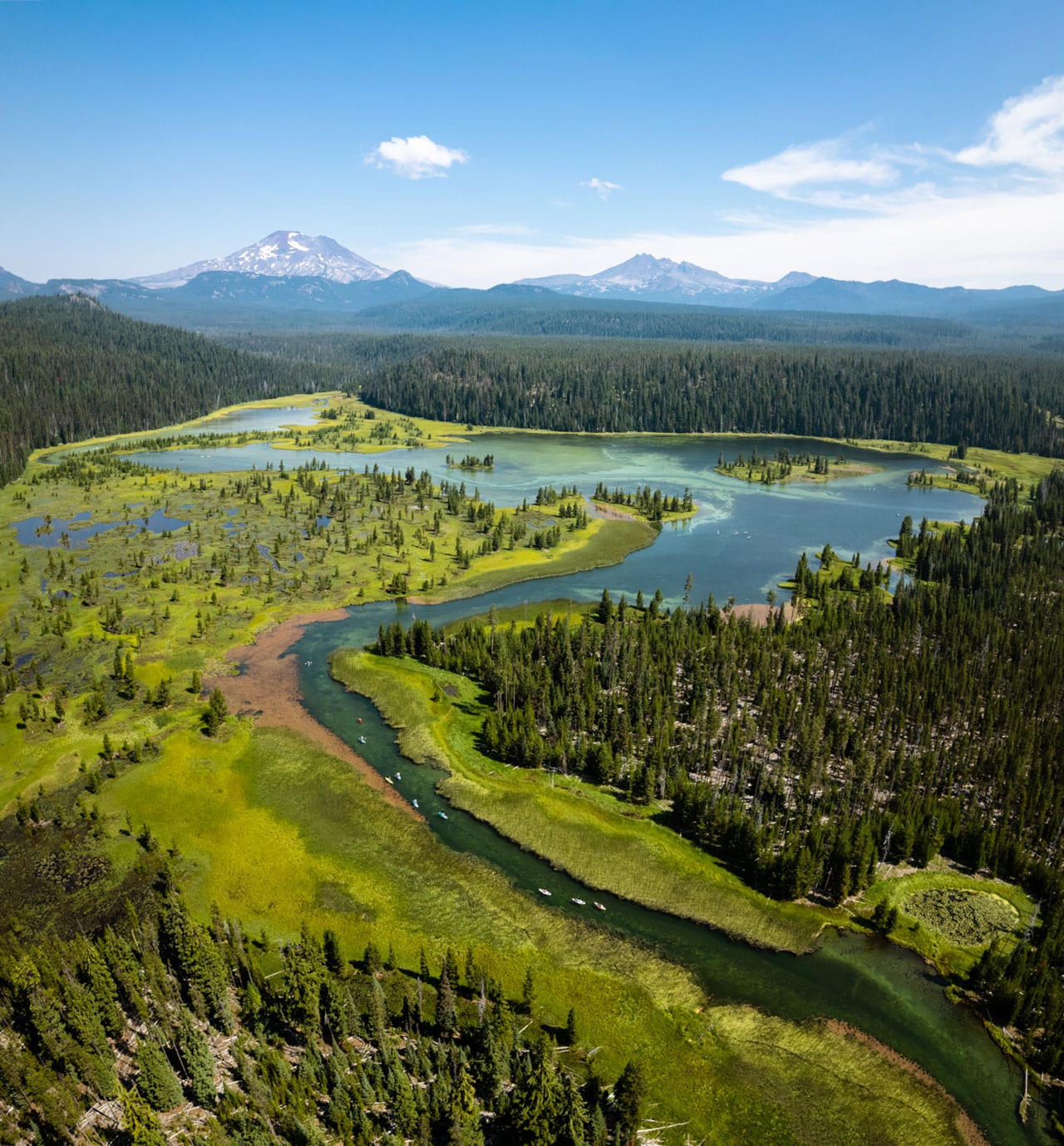
Photo of Hosmer Lake by Christian Murillo - Peaceful Lava Lake is notorious for one of Central Oregon’s greatest unsolved mysteries. In the winter of 1923-24, three burly men settled into a small cabin near the lake for what they thought would be a profitable winter of fur trapping. However, in early spring, the cabin was found abandoned and all three of their bodies were discovered on the surface of the lake when the ice melted, each with evidence of gunshot wounds. While no one was ever charged in the murders, it’s safe to say the killer is no longer at large.
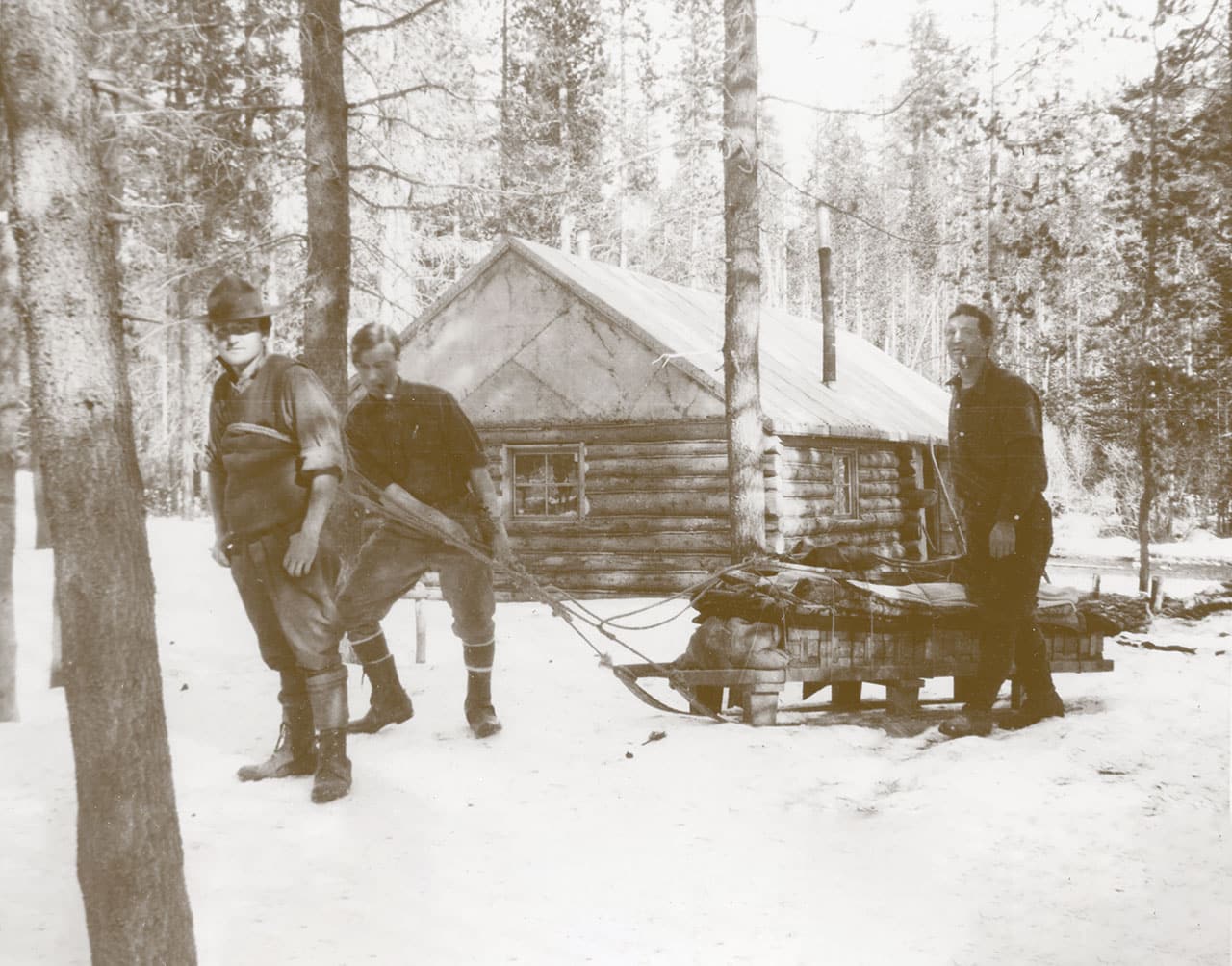
Lava Lake Murders, courtesy of Deschutes County Historical Society - Nearby, the creek flowing out of Little Lava Lake is the source of the Deschutes River. Its water has been traced all the way back to Mount Bachelor, which absorbs most of its snowmelt like a sponge and sends it downhill to the lake. From here, the Deschutes River continues south to Crane Prairie Reservoir, does a 180 at Wickiup Reservoir and completes its rollicking journey to the Columbia River, 252 miles in all.
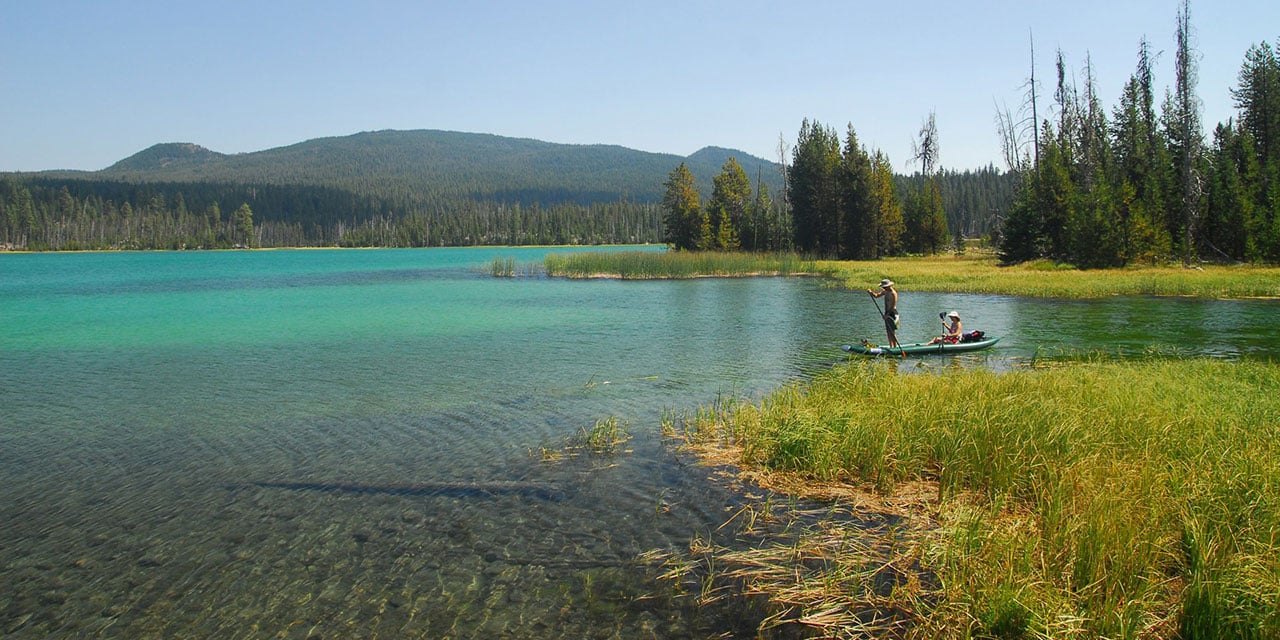
Little Lava Lake - A short hike to Osprey Point at Crane Prairie Reservoir brings you to a prime spot for wildlife viewing. Once an endangered species, about half of Oregon’s osprey population returns to nest and mate here every spring. They share the habitat with eagles, often competing over the same fish in their unique ways. While eagles gracefully soar down and grab a fish near the surface of the water, osprey pause high above the lake, then power dive as much as three feet underwater, which gives osprey their name “fishing hawks.”
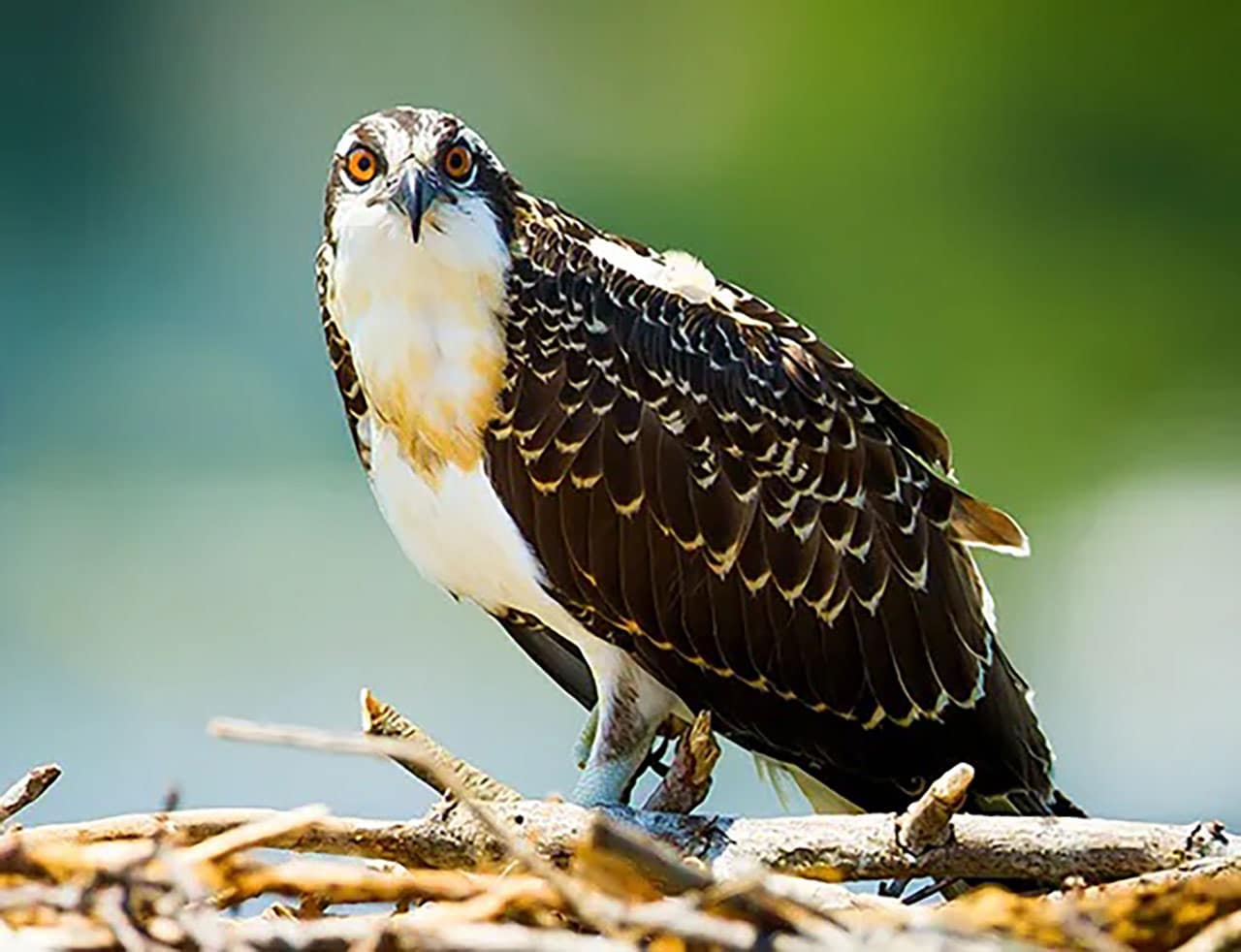
- In April of 1940, a team of 600 Civilian Conservation Corps (CCC) workers began clearing trees and moving dirt to build Wickiup Reservoir. Creating this source of irrigation water for the Madras area was one of the CCC’s biggest undertakings; and yet, as WWII roared in, most of the crew members were called away to serve elsewhere. So who stepped in to finish the job in 1946? A group of Mennonite conscientious objectors.
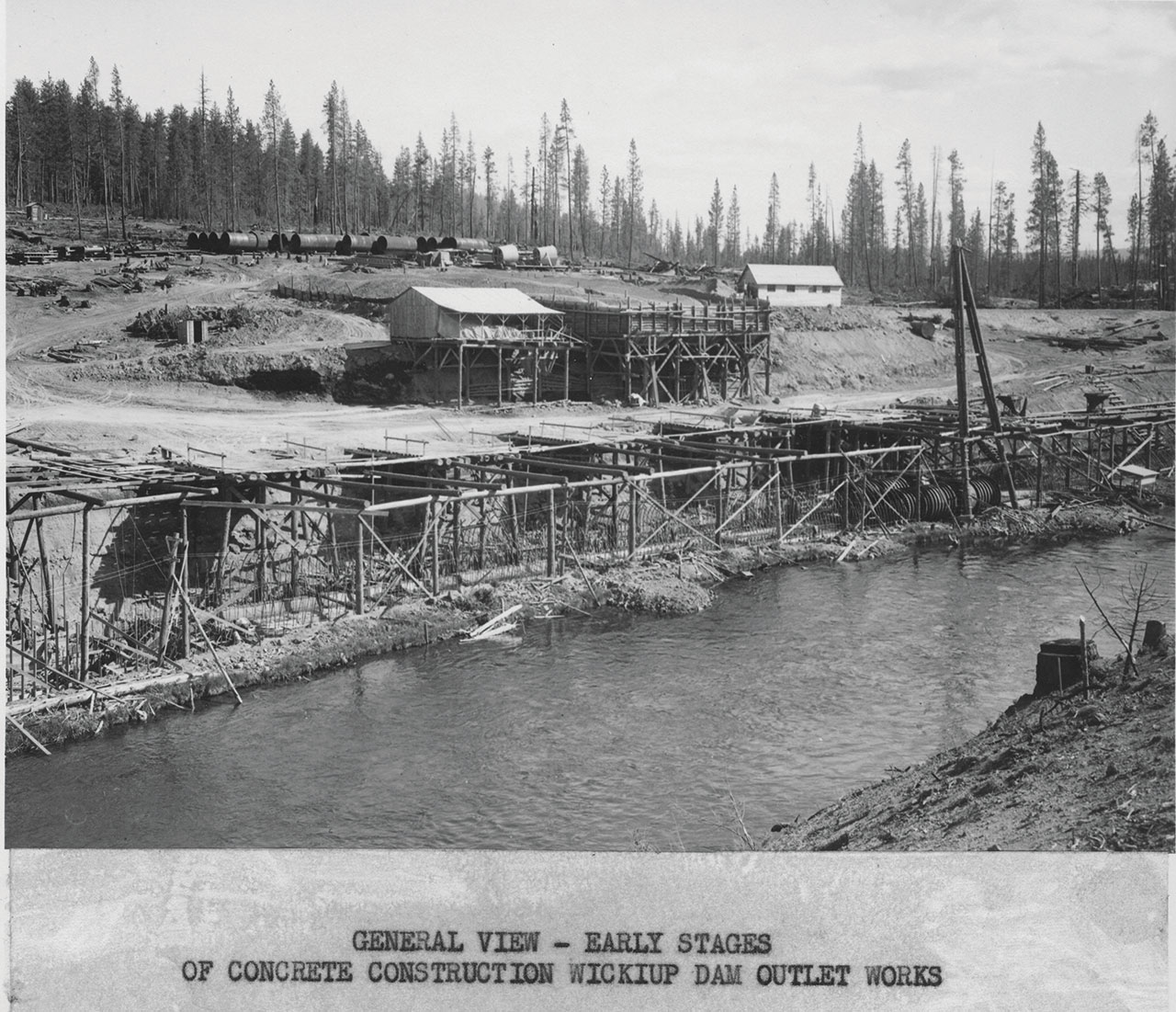
Wickiup Dam, courtesy of Deschutes County Historical Society - At the end of the byway lies Crescent Lake. Until 1941, ski trains shuttled people there to downhill ski. Soon after, Willamette Pass Ski Area usurped it with easier access and better terrain. Appearing like a throwback to those times is the roadside cabin, Manley’s Tavern. The Manley family has been serving up broasted chicken since 1973. If you’re lucky, reserve a night at the 1930s Crescent Guard Station to feel the history of the land and the roadway to get there.
